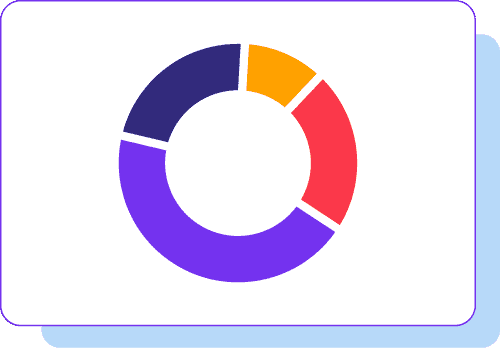Welcome to the Ultimate SEO Guide for Beginners, carefully crafted by EruptSEO, your digital partner in mastering the world of online visibility. In this introductory section, we’ll demystify the essence of SEO and lay the foundation for your journey into the realm of search engine optimisation.
Defining SEO
SEO, or Search Engine Optimisation, is the practice of enhancing your website’s visibility on search engines like Google, Bing, and others. It involves strategic efforts to improve rankings, drive organic traffic, and boost the overall online presence of your website.
Why SEO Matters?
In today’s digital landscape, where online competition is fierce, SEO is the key to standing out. Effective SEO not only ensures that your website is easily discoverable by your target audience but also plays a crucial role in establishing trust, credibility, and authority in your industry.
Why SEO Matters?
| Aspects | Significance |
|---|---|
| Impact on Website Visibility | Imagine having a fantastic website, but it’s like a hidden gem in the vastness of the internet. SEO acts as your virtual guide, helping search engines find, index, and display your website in response to relevant user queries. The better your SEO, the higher your website appears in search results. |
| Driving Organic Traffic | Unlike paid advertising, SEO is organic and sustainable. It’s about attracting users genuinely interested in your content or services. By optimising your website for relevant keywords, you’ll attract organic traffic – visitors who are more likely to convert into customers or engaged users. |
As you embark on this SEO journey with EruptSEO, remember that SEO is not just a marketing tactic; it’s a strategic investment in the long-term success of your online presence. In the upcoming chapters, we’ll delve deeper into the intricacies of SEO, providing you with actionable insights and step-by-step guidance to elevate your website’s visibility and performance. Let’s dive in!
Fundamentals of Search Engines

Search Engine Algorithms
Understanding the Core of SEO Algorithms
SEO algorithms are complex systems that evaluate and rank websites based on a variety of factors. These factors include the relevance of content, user experience, page load speed, mobile-friendliness, and the overall quality of information provided.
| Algorithm Criteria | Impact on Rankings |
|---|---|
| Relevance of Content | Content that directly addresses user queries and provides valuable information positively impacts rankings. |
| Quality Backlinks | Inbound links from authoritative websites act as signals of credibility and can positively impact rankings. |
| User Engagement | Metrics like click-through rates and time spent on a page indicate user satisfaction, influencing rankings. |
| Page Load Speed | Faster-loading pages enhance user experience and are often rewarded with higher rankings. |
To thrive in search rankings, create content that aligns with user intent, incorporates relevant keywords naturally, and ensures a seamless browsing experience.
How Algorithms Determine Rankings
Search engines utilise intricate algorithms to assess and rank websites. Key criteria include:
| Algorithm Criteria | Guidance for Optimisation |
|---|---|
| Relevance of Content | Regularly update content to keep it fresh and valuable to users. |
| Quality Backlinks | Conduct regular audits of your content, ensure link quality, and optimise technical aspects for improved user engagement. |
| User Engagement | Monitor and improve click-through rates and time spent on pages to enhance user satisfaction. |
| Page Load Speed | Optimise technical aspects to ensure faster page load speeds. |
Key Search Engine Players
Google, the dominant player, prioritises user-centric content. Key considerations include:
| Google’s Preferences | Optimisation Tips |
|---|---|
| Quality Content | Regularly update content to keep it fresh and valuable to users. |
| Mobile-Friendliness | Optimise your website for mobile devices to meet Google’s mobile-first indexing. |
| Search Stats | Leverage Google Search Console and Google Analytics for insights into user behaviour and search trends. |
Bing values social signals, multimedia content, and has its unique considerations.
| Bing’s Preferences | Optimisation Tips |
|---|---|
| Social Signals | Engage in social media to enhance your website’s visibility on Bing. |
| Multimedia Content | Incorporate videos and diverse media content for a well-rounded approach. |
While Google and Bing are major players, smaller search engines also contribute to your website’s visibility. Consider optimising for:
| Search Engine | Global Traffic Share | Unique Considerations |
|---|---|---|
| 91.54% | Dominant; prioritise user-centric, valuable content. | |
| Bing | 3.19% | Values social signals, multimedia content. |
| Yandex | 1.78% | Dominant in Russia; prioritise Russian language content. |
| Yahoo! | 1.23% | Focus on Chinese language content for visibility in China. |
| Baidu | 0.93% | Important in South Korea; prioritise content in Korean, engage with the Naver platform. |
| DuckDuckGo | 0.55% | Dominant in the Czech Republic; optimise content for Czech language and user preferences. |
By understanding these preferences and considering search statistics, you can tailor your content strategy to cater to a broader audience and diverse search engine landscapes.
On-Page SEO
Keyword Research
Understanding the Significance of Keywords in SEO
Importance of Keywords: Keywords play a crucial role as bridges between user queries on search engines and the content available on your website. A strategic grasp of these keywords enables you to align your content with user intentions. Here’s a straightforward approach to identifying relevant keywords, particularly if you are new to this process.
Tips for Identifying Keywords:
| Tip | Description |
|---|---|
| Start Simple | Commence the process with fundamental terms closely associated with your business or industry. |
| Alphabetical Exploration | Broaden your scope by appending each letter of the alphabet to your initial keyword, uncovering potential variations. |
| Wildcard Inclusion | Utilise an asterisk (*) as a placeholder within your initial keyword to explore different phrasings and expressions. |
| Question Formation | Transform your keyword into a question, reflecting common queries users might have. |
| Prepositions and Comparisons | Experiment with prepositions and comparative terms to diversify your keyword list. |
Understanding user intent is crucial in optimising your content. Tools like Google Keyword Planner, SEMrush, and Ahrefs provide valuable insights into what your audience is searching for. Incorporate long-tail keywords to capture specific and niche queries, attracting a more engaged audience. Additionally, conduct competitor analysis to identify gaps and opportunities, guiding your content strategy for differentiation.
Crafting content around these identified keywords enhances visibility and attracts a more targeted audience.
Title Tags and Meta Descriptions
Optimising Titles and Descriptions for Engagement
Optimisation Best Practices:
| Best Practice | Implementation Tips |
|---|---|
| Concise Titles | Formulate titles that are succinct yet descriptive, providing a snapshot of your content while piquing user interest. |
| Engaging Meta Descriptions | Craft meta descriptions that summarise your content and motivate users to click through and explore further. |
| Incorporate Keywords Naturally | Seamlessly integrate relevant keywords within title tags and meta descriptions for improved search engine relevance. |
Optimising title tags and meta descriptions involves finding a delicate balance between search engine visibility and user engagement.
URL Structure
Creating User-Friendly URLs
Optimisation Best Practices:
| Best Practice | Implementation Tips |
|---|---|
| Clarity and Readability | Design URLs that are easy to read, conveying the hierarchical structure of your content for a positive user experience. |
| Incorporate Target Keywords | Enhance search engine understanding by integrating relevant keywords into your URLs. |
| Avoid Special Characters | Simplify URLs by using hyphens to separate words, steering clear of special characters for improved readability and accessibility. |
Achieving a balance between clarity and relevance in your URL structure contributes to a seamless user and search engine experience.
In the next section, we will explore the technical aspects of SEO, including website crawling, indexing, site speed, and mobile optimisation. These technical elements are foundational for establishing a robust SEO framework.
Technical SEO

Website Crawling and Indexing
Search engines use crawlers to navigate websites. These automated bots follow links, discovering and indexing web pages. Optimising your site’s crawlability ensures search engines can efficiently explore and understand your content.
Optimisation Best Practices:
| Best Practice | Implementation Tips |
|---|---|
| XML Sitemaps | Create and submit XML sitemaps to search engines. These provide a roadmap of your site, aiding in efficient crawling. |
| Robots.txt File | Use a robots.txt file to guide crawlers on which pages to access or avoid. This helps prioritise indexing for key content. |
| Internal Linking | Implement internal linking to connect pages within your site, enhancing crawlability and facilitating content discovery. |
| Page Load Speed | Optimise page load speed to expedite crawling and improve user experience. Compress images, use browser caching, and leverage content delivery networks (CDNs). |
Site Speed and Performance
Site speed directly influences user experience and search engine rankings. Slow-loading pages can deter users and negatively impact SEO. Optimising your site for speed involves various strategies to enhance performance.
Optimisation Best Practices:
| Best Practice | Implementation Tips |
|---|---|
| Image Compression | Compress images to reduce file sizes without compromising quality. Tools like TinyPNG or ImageOptim can assist. |
| Browser Caching | Implement browser caching to store static files on a user’s device, reducing load times upon subsequent visits. |
| Content Delivery Networks | Utilise CDNs to distribute content across servers globally, ensuring faster loading times for users in different regions. |
| Minimise HTTP Requests | Reduce the number of elements on a page requiring separate HTTP requests, streamlining the loading process. |
Mobile Optimisation
With the rise of mobile device usage, Google prioritises mobile-friendly sites in search results. Ensuring your website is optimised for mobile devices is essential for both user experience and SEO.
Optimisation Best Practices:
| Best Practice | Implementation Tips |
|---|---|
| Responsive Design | Implement responsive design to ensure your site adapts to various screen sizes, providing a seamless experience across devices. |
| Mobile-Friendly Testing | Use Google’s Mobile-Friendly Test to assess your site’s mobile compatibility and identify areas for improvement. |
| Accelerated Mobile Pages | Consider implementing Accelerated Mobile Pages (AMP) for faster loading times on mobile devices, improving both speed and SEO. |
| Structured Data for Mobile | Leverage structured data to provide information about your content, aiding search engines in understanding and presenting it on mobile devices. |
Optimising technical aspects such as crawling, site speed, and mobile experience lays a solid foundation for a website’s SEO. In the next chapter, we’ll delve into off-page SEO strategies, including backlink building and leveraging social signals.
Off-Page SEO
Backlink Building
What is a Link?
A link is a clickable element on a webpage that directs users to another page, website, or resource. In the context of SEO, links can be classified into internal links, which point to pages within the same domain, and external links (backlinks), which come from other websites.
Understanding Backlink Building
Backlinks, also known as inbound links, are essential components of off-page SEO. A backlink is a hyperlink from one webpage to another. These links serve as endorsements, indicating to search engines that your content is valuable and worthy of reference. The more reputable and authoritative the linking site, the more positive impact it has on your site’s SEO.
Optimisation Best Practices:
| Best Practice | Implementation Tips |
|---|---|
| Quality Over Quantity | Prioritise high-quality backlinks from authoritative sites rather than focusing solely on the number of links. |
| Diverse Anchor Text | Use varied anchor text for backlinks, incorporating natural language and relevant keywords for a balanced link profile. |
| Guest Blogging | Contribute guest posts to reputable sites within your niche, earning backlinks while establishing authority and expertise. |
| Monitor Backlink Profile | Regularly assess your backlink profile using tools like Ahrefs or Moz to identify and address any low-quality or harmful links. |
Social Signals
Understanding Social Signals
Social signals encompass the activities, interactions, and engagement your content receives on social media platforms. While they may not directly influence search rankings, social signals play a pivotal role in enhancing overall online visibility. These signals signify how users perceive and engage with your content, indirectly contributing to your website’s authority.
How Social Signals Contribute
- Amplification of Content: Social media platforms act as amplifiers, allowing your content to reach a broader audience as users share, like, and comment on your posts.
- Community Building: Maintaining an active social presence helps build a community around your brand. Engaging with users fosters a sense of connection and loyalty.
- Indirect SEO Influence: While search engines don’t use social signals as a direct ranking factor, the increased visibility and engagement on social media can indirectly impact SEO.
Optimisation Best Practices:
| Best Practice | Implementation Tips |
|---|---|
| Active Social Presence | Maintain an active presence on relevant social media platforms to promote content, engage with users, and build a community around your brand. |
| Social Content Promotion | Share your content on social media, encouraging followers to engage, share, and amplify your reach across different audiences. |
| Encourage Social Sharing | Incorporate social sharing buttons on your website to facilitate easy content sharing, expanding its reach across various platforms. |
| Leverage Social Signals | Monitor and analyse social signals using social media analytics tools to understand user engagement and adjust your strategy accordingly. |
Focusing on off-page SEO strategies, including backlink building and leveraging social signals, enhances your website’s authority and visibility. In the next chapter, we will explore SEO analytics and measurement, providing insights into essential metrics and tools for evaluating your SEO performance.
SEO Analytics and Measurement

Understanding SEO Analytics
In the dynamic world of digital marketing, SEO analytics serve as the compass guiding your website’s journey through the vast online landscape. These tools are indispensable for evaluating the effectiveness of your SEO strategies. SEO analytics provide profound insights into user behavior, keyword performance, and the overall health of your website. By familiarising yourself with these analytics tools, you empower yourself to make data-driven decisions, fostering continuous improvement in your online presence.
Key SEO Analytics Tools
| Analytics Tool | Overview |
|---|---|
| Google Analytics | A comprehensive tool offering a 360-degree view of your website. It provides insights into website traffic, user behavior, and the effectiveness of your SEO strategies. |
| Google Search Console | A specialised tool focusing on search-related metrics. It provides valuable data on keywords, impressions, and site indexing, offering a direct line to Google’s insights about your site. |
| Ahrefs | A powerful ally for SEO professionals, Ahrefs offers in-depth backlink analysis, competitor research, and keyword tracking. It unveils the intricate web of connections that shape your site’s authority. |
| Moz | Moz is a reliable companion offering insights into site performance, keyword rankings, and backlink data. It assists in the continual refinement of your SEO strategy for optimal results. |
| Semrush | A versatile tool that spans various SEO aspects, Semrush aids in keyword research, backlink analysis, and competitive intelligence, providing a comprehensive view of your digital landscape. |
| Ubersuggest | Particularly useful for keyword research, Ubersuggest unveils valuable insights into search volumes, competition, and potential keyword strategies for your content. |
Key SEO Metrics
Metrics in the realm of SEO are like the vital signs of your website’s health. Understanding these key metrics is akin to reading the pulse of your online presence, enabling you to assess the effectiveness of your strategies and pinpoint areas for improvement.
Key SEO Metrics:
| SEO Metric | Definition |
|---|---|
| Organic Traffic | The lifeblood of your website, this metric reveals the number of visitors arriving through organic (non-paid) search results. |
| Keyword Rankings | Unveiling the positions of your targeted keywords in search engine results pages (SERPs), this metric gauges your visibility in the digital landscape. |
| Backlink Profile | Reflecting the quality and quantity of websites linking back to your site, this metric influences your website’s authority and trustworthiness. |
| Bounce Rate | Signifying the percentage of visitors who navigate away from your site after viewing only one page, this metric offers insights into user engagement. |
| Conversion Rate | Measuring the percentage of visitors completing a desired action, such as making a purchase or filling out a form, this metric is the heartbeat of your online success. |
Local SEO
Importance of Local SEO
Local businesses in the United Kingdom can significantly benefit from harnessing the power of Local SEO. As we delve into the significance of Local SEO, we unravel its profound impact on businesses operating within specific geographic locations. From enhanced visibility in local search results to increased foot traffic, optimising for local search opens doors to a myriad of opportunities.
Impact on Local Businesses
Local SEO is the cornerstone for small and medium-sized businesses looking to establish a robust online presence within their communities. It goes beyond merely attracting online traffic; it is about connecting with the local audience and becoming a visible, trusted entity in the neighbourhood. By honing in on local search optimisation, businesses can expect an uptick in store visits, phone calls, and overall engagement, translating digital visibility into tangible, real-world results.
Optimising for Local Search
The roadmap to success in Local SEO involves a strategic optimisation approach. From crafting location-specific content to ensuring accurate business information across online platforms, the devil is in the details. In this section, we’ll explore the nuances of optimising for local search, offering actionable insights to propel your business to the forefront of local search results.
Table 1: Local SEO Checklist
| Optimisation Aspect | Action Steps |
|---|---|
| Location-Specific Keywords | Identify and incorporate local keywords. |
| Google My Business (GMB) | Claim and verify your GMB listing. |
| NAP Consistency | Ensure Name, Address, and Phone consistency. |
| Online Reviews | Encourage and manage customer reviews. |
| Local Citations | List your business on local directories. |
Google My Business
At the heart of local search visibility lies Google My Business (GMB), a powerful tool that can make or break your local online presence. In this segment, we’ll guide you through the process of setting up and optimising your GMB profile, demystifying the intricacies that can significantly impact your local search rankings.
Who Can Have a GMB Profile?
According to Google’s terms and policies, businesses eligible for a Google My Business profile must have a physical location where they conduct face-to-face business with customers. This includes storefronts, offices, or service-area businesses that visit or deliver to customers directly. We emphasise the importance of adhering to Google’s guidelines to ensure the authenticity and credibility of your GMB listing.
If your business doesn’t have a physical location, consider obtaining one to meet Google’s criteria. Alternatively, if securing a physical location isn’t feasible or does not apply to your business, focus on optimising other elements of local SEO to boost your page ranking in organic search.
Setting Up and Optimising a GMB Profile
A comprehensive GMB profile is more than just a virtual business card; it’s a dynamic tool that showcases your business to potential customers. We’ll walk you through the steps of setting up your GMB profile, ensuring that every element is fine-tuned for maximum impact. From choosing the right categories to soliciting customer reviews, we leave no stone unturned in creating a compelling GMB presence.
Table 2: GMB Optimisation Tips
| GMB Element | Optimisation Tips |
|---|---|
| Business Information | Ensure accuracy of business name and details. |
| Categories | Choose relevant categories for your business. |
| Photos | Add high-quality images showcasing your brand. |
| Reviews | Actively seek and respond to customer reviews. |
Leveraging GMB for Local Visibility
Your GMB profile is not a static entity; it’s a dynamic asset that can be leveraged to enhance local visibility continually. We’ll explore advanced GMB strategies, including posts, Q&A, and insights, to keep your profile vibrant and captivating. Uncover the tactics that will propel your business to the top of local search results and make your mark in the digital landscape.
SEO Best Practices and Future Trends
Current Best Practices
Search engines continuously refine their algorithms to enhance user experience and provide the most relevant results. Adapting to these changes is vital for sustained SEO success.
| Strategy | Description |
|---|---|
| Continuous Monitoring | Regularly check search engine announcements, industry forums, and official documentation to stay informed about algorithm updates. |
| Analyse Impact | Evaluate how algorithm updates affect your website’s performance by monitoring changes in rankings, traffic, and user behaviour. |
| Adjust SEO Strategy | Modify your SEO strategy based on observed changes and emerging trends. This may involve tweaking keywords, content, or technical aspects of your website. |
Ensuring Adherence to SEO Guidelines
Adhering to search engine guidelines ensures ethical practices, helping maintain a positive online presence.
| Guideline | Description |
|---|---|
| Quality Content | Create content that is informative, relevant, and valuable to your audience. High-quality content contributes to improved user engagement and search rankings. |
| Ethical Link Building | Focus on organic link-building methods rather than resorting to manipulative tactics. Natural, earned backlinks from reputable sources enhance your website’s authority. |
| Mobile-Friendly Design | With an increasing number of users accessing the internet via mobile devices, having a website optimised for mobile is crucial. Responsive design ensures a seamless user experience across different devices. |
Emerging Trends in SEO
Voice Search Optimisation
| Optimisation Tip | Description |
|---|---|
| Conversational Keywords | Voice searches often use natural language. Incorporate conversational keywords and phrases that people are likely to use when speaking. |
| Localised Content | Optimise content for local searches, as many voice searches are location-specific. Consider creating location-based content to capture regional audiences. |
| Featured Snippets | Aim for featured snippets, as they are often read aloud by virtual assistants. Structuring content to provide concise, informative answers increases the chances of being featured. |
The Role of AI in SEO
| AI Application | Description |
|---|---|
| Natural Language Processing (NLP) | NLP involves AI algorithms understanding and interpreting human language. In SEO, NLP helps search engines comprehend user queries more effectively. |
| Predictive Analytics | AI-driven predictive analytics analyses data to forecast future trends and user behaviour. This information can inform content creation and marketing strategies. |
| Content Generation | AI tools can assist in generating content by understanding patterns and preferences. However, human oversight is crucial to ensure content aligns with brand voice and objectives. |
Conclusion and Continuous Learning

Recap of Key Learnings
| Chapter | Key Learnings |
|---|---|
| 1. Understanding SEO Fundamentals | – Importance of keywords and on-page optimisation. – User experience as a crucial ranking factor. |
| 2. Mastering Technical SEO | – Significance of website structure, crawlability, and indexing. – Technical optimisation tactics. |
| 3. Crafting Compelling Content | – Content creation principles for relevance and engagement. – Alignment with search intent. |
| 4. Unleashing the Power of Backlinks | – The role of backlinks in building authority and trust. – Ethical link-building practices. |
| 5. SEO Analytics and Measurement | – Utilising analytics tools for insights into website performance. – Monitoring key SEO metrics. |
| 6. Local SEO Strategies | – Importance of local search optimisation for businesses. Leveraging Google My Business. |
| 7. Current Best Practices | – Staying informed about algorithm updates. – Adherence to SEO guidelines. |
| 8. Emerging Trends in SEO | – Voice search optimisation principles. – The impact of AI on SEO. |
| 9. Conclusion and Continuous Learning | – Cultivating a mindset of continuous learning. – Taking action and implementing SEO strategies. |
Encouragement for Continuous Learning
| Action | Description |
|---|---|
| Stay Informed | Regularly explore industry blogs, attend webinars, and engage with SEO communities. |
| Test and Iterate | Experiment with different strategies, monitor results, and iterate based on performance. |
| Embrace New Technologies | Be open to adopting new tools and methodologies that enhance your SEO strategies. |
| Network and Collaborate | Engage with fellow SEO professionals, marketers, and industry experts for insights and collaboration. |
Moving Forward
Implement the knowledge gained from this guide, experiment with strategies, and monitor the impact on your website’s performance. For comprehensive SEO services tailored to your needs, consider exploring EruptSEO’s SEO Services to take your digital presence to new heights.
Final Thoughts
In the ever-evolving world of SEO, the pursuit of knowledge is an ongoing journey. This guide has equipped you with a holistic understanding of SEO fundamentals, best practices, and emerging trends. Remember, SEO is not a destination but a continuous process of refinement and adaptation. Embrace the challenges, celebrate the victories, and embark on your journey of SEO mastery. May your digital presence thrive in the competitive landscape of the internet.















